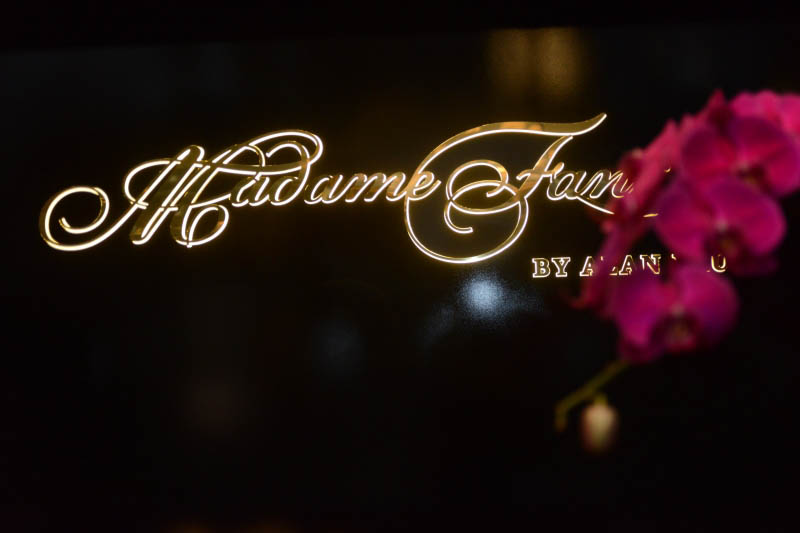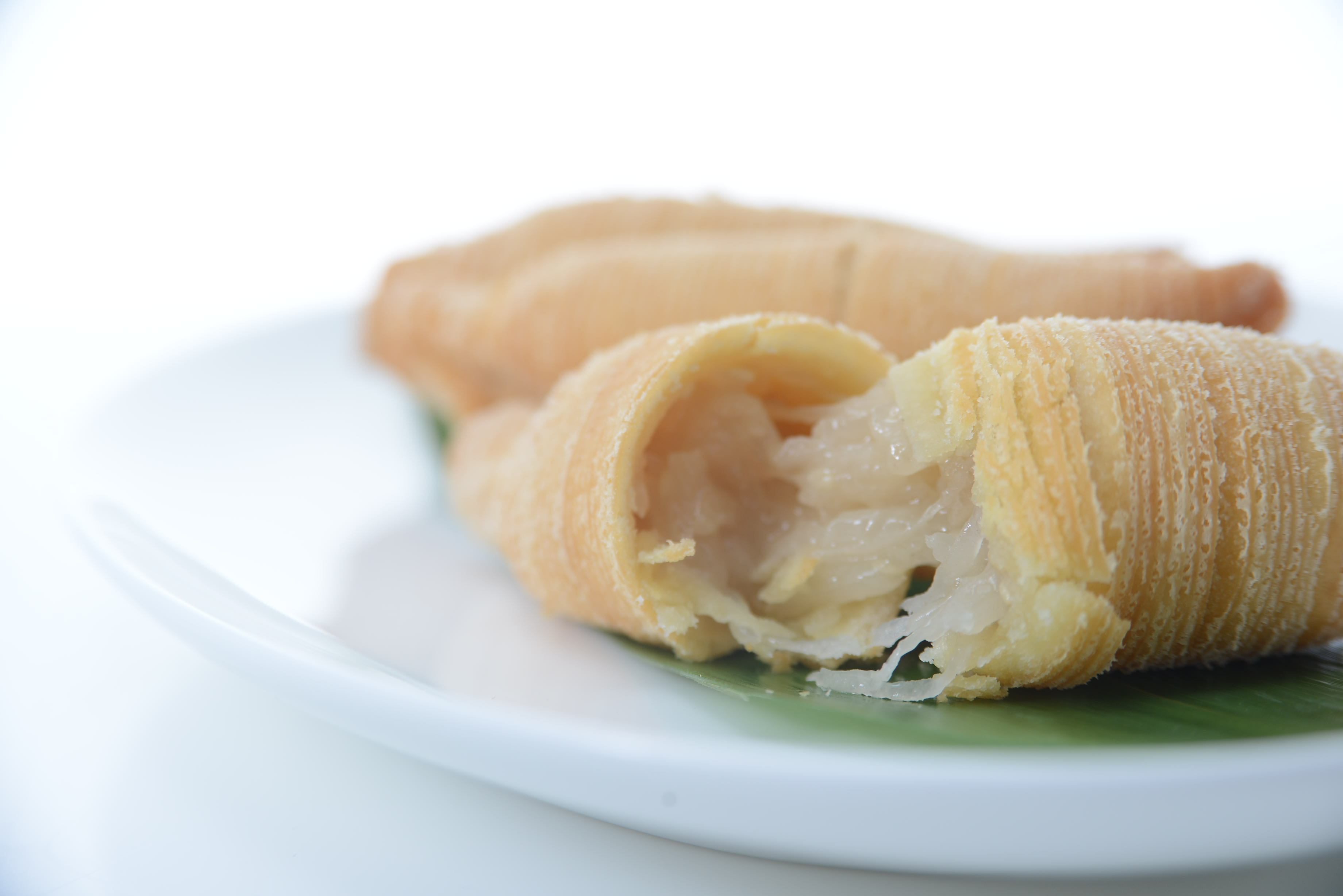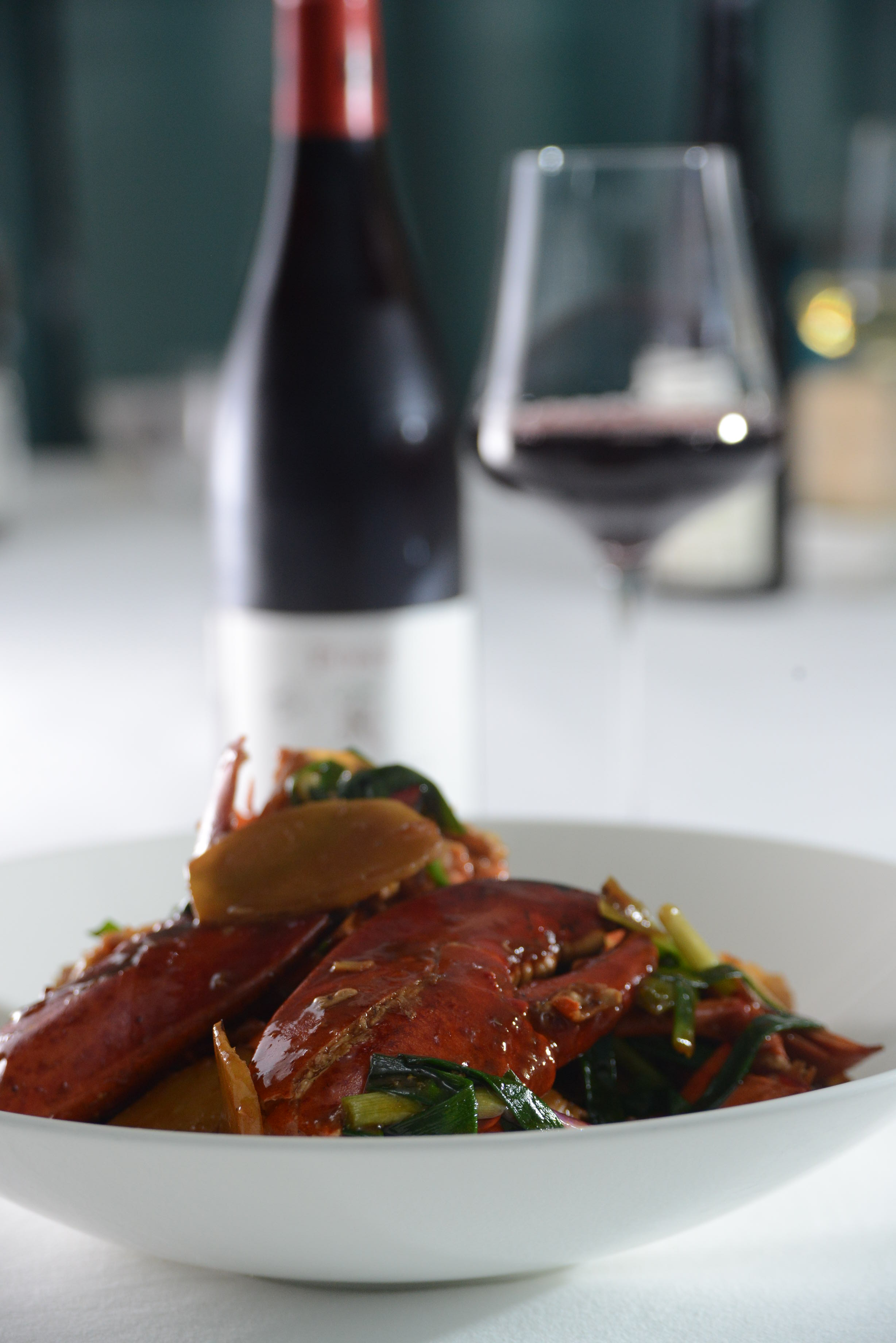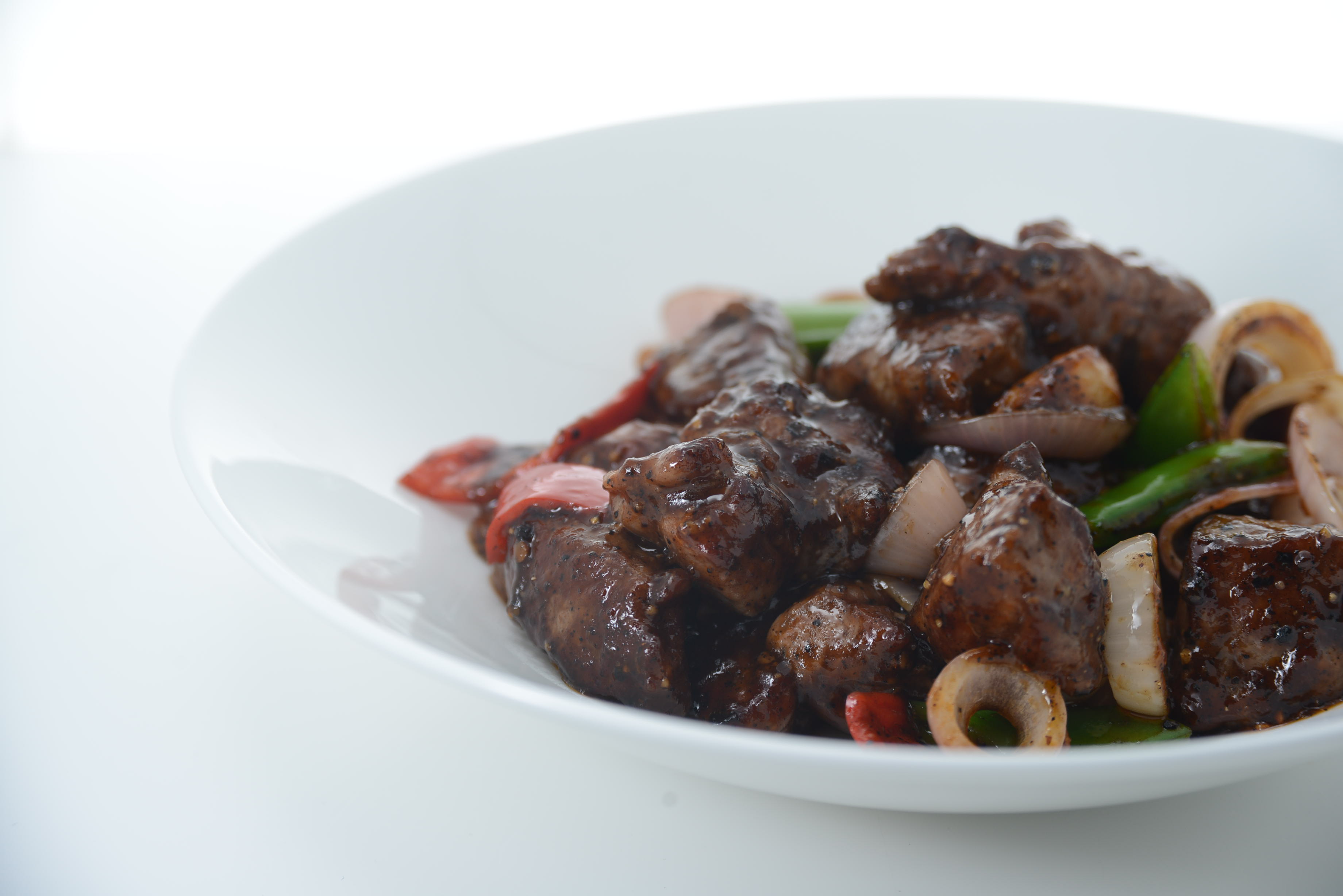London Cantonese Makes It's Singapore Break
by Reuben Oh
@ 30 Aug 2018


Living up to his reputation as one of London’s top restaurateurs, the interior design of the restaurant is every bit as detailed and alluring as his other ventures. To take one example, every chandelier in the restaurant is decoratively themed. At the entrance, spotless ceramic ware hang seemingly precarious (on closer inspection, they’re fastened) onto the lights, the private rooms appear to have a large crystal poking out from the ceiling and the VIP room’s is grand to the tithe of the word.

My visit to the restaurant is started off with the Mooli puff. It’s the Alan Yau classic (the restaurateur popularised the dish back in London) with a crispy, flaky outside and a hot, not-too-greasy radish filling. Fabien Duboueix, sommelier of NCO club, paired it off with a Comte de la Perriere Sancerre Sauvignon Blanc, “when you have something crispy you want a wine that is more fresh and acidic – I chose a Sancerre from the Loire valley because it matches that profile perfectly.” Duboueix has a very fixed rule when it comes to serving wine: you eat (and drink) what you like. “Other sommeliers say that we need to educate the customer. I think that the customer would get educated if they want to - if I bring my car to a garage, I don’t want to know the problem, I want to fix it." For the next dish, he pairs a Côtes du Rhône Jean-Louis Chave Selection with the distinctly Sarawak black peppered Australian rib-eye beef. The tannins of the wine cut through the tender beef nicely. “This one in particular is half Grenache and half Syrah. The Grenache will add some fruitiness to the pairing whereas Syrah is known to be good with black pepper.”

Some say a good Chinese restaurant (especially a Cantonese one) can be measured by the quality of its soup. Madame Fan’s four treasures soup is done with sea cucumber, fish maw, dried scallop, and crabmeat, all combined in a thick double-boiled broth served in a young coconut shell. The intact flesh of the coconut complements the soup well, giving it an added burst of flavour. Wines and Chinese soups make an unusual match, but Duboueix manages to pull off an interesting pairing with the Grüner Vetliner Loiserberg, Weingut Loimer. “It’s a very unique Weingut Loimer, more herbaceous than fruity, which pairs well with the components of the soup. It is also still a rich, medium bodied wine, making it a match for the soup’s texture.

In grand affair, Chef de Cuisine Mike Tan brings out the last dish: lobster done Cantonese style, with ginger, spring onion, and wonton noodle. The lobster meat is fresh and full of flavour, and the wonton noodles spring to the touch. Duboueix pairs this delightful dish with a Pinot Noir Tradition, Rudolf Fürst: “For this dish, I didn’t want to pick a wine that is too powerful, lest it overpower the quality of the lobster. Something gentle would be best, so I chose a pinot noir. Most pinot noir are known to be from Burgundy, for me the best pinot noir outside of Burgundy would be in Germany. This particular German wine is gentle but still has good flavour for this pairing.”

Chef Tan, a Johor Bahru native, has worked with Yau both in Hakkasan Miami and in his restaurants in London. What’s Yau been doing across all these countries that’s made his restaurants so successful? “When he travels and opens a new restaurant,” Chef Tan answers, “He will bring the recipes he is famous for from his previous restaurants to the new place and let the team and chefs re-tweak it to suit the local palette.” Whatever changes he and his team have made, it hits the spot with this Singaporean tongue. Madame Fan is Yau’s first step into this region – hopefully, it won’t be his last.
Madame Fan
32 Beach Rd, Singapore 189761
+65 6818 1921





